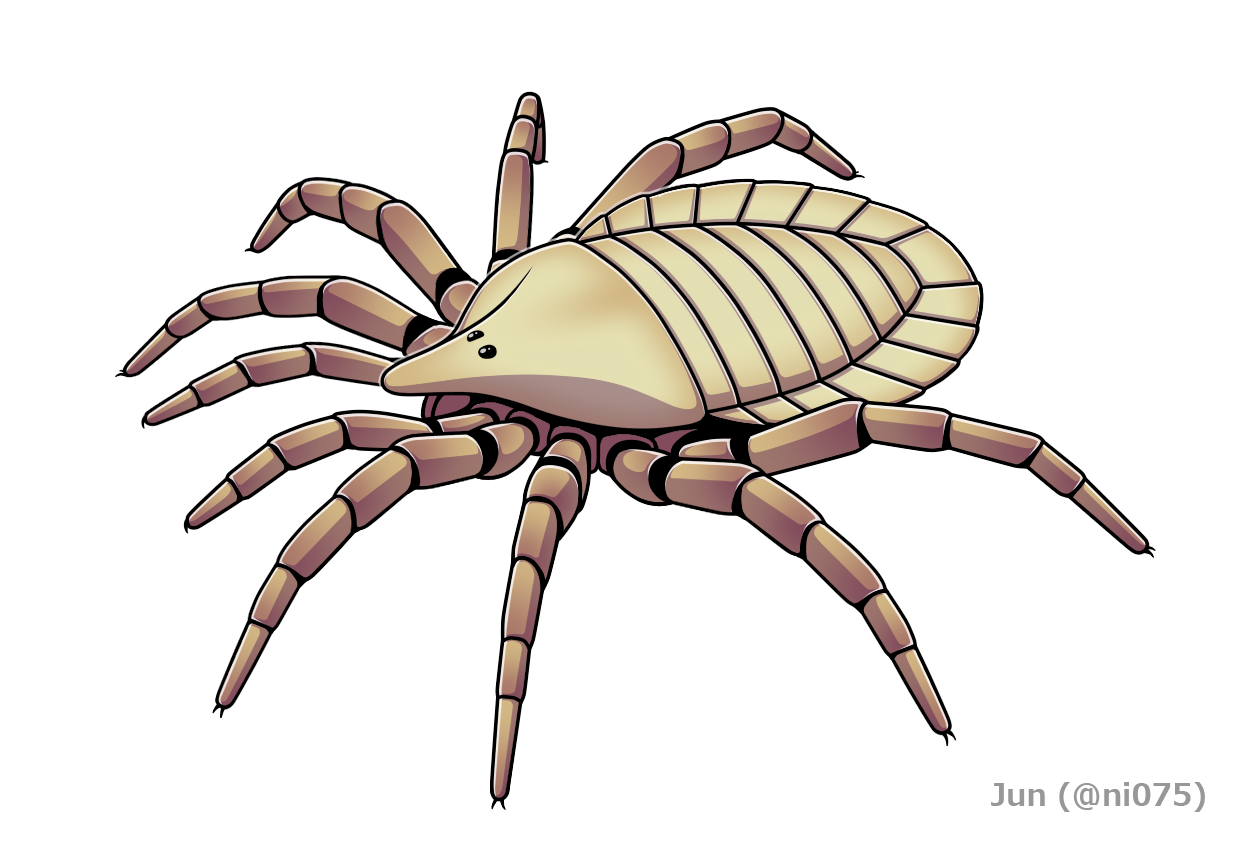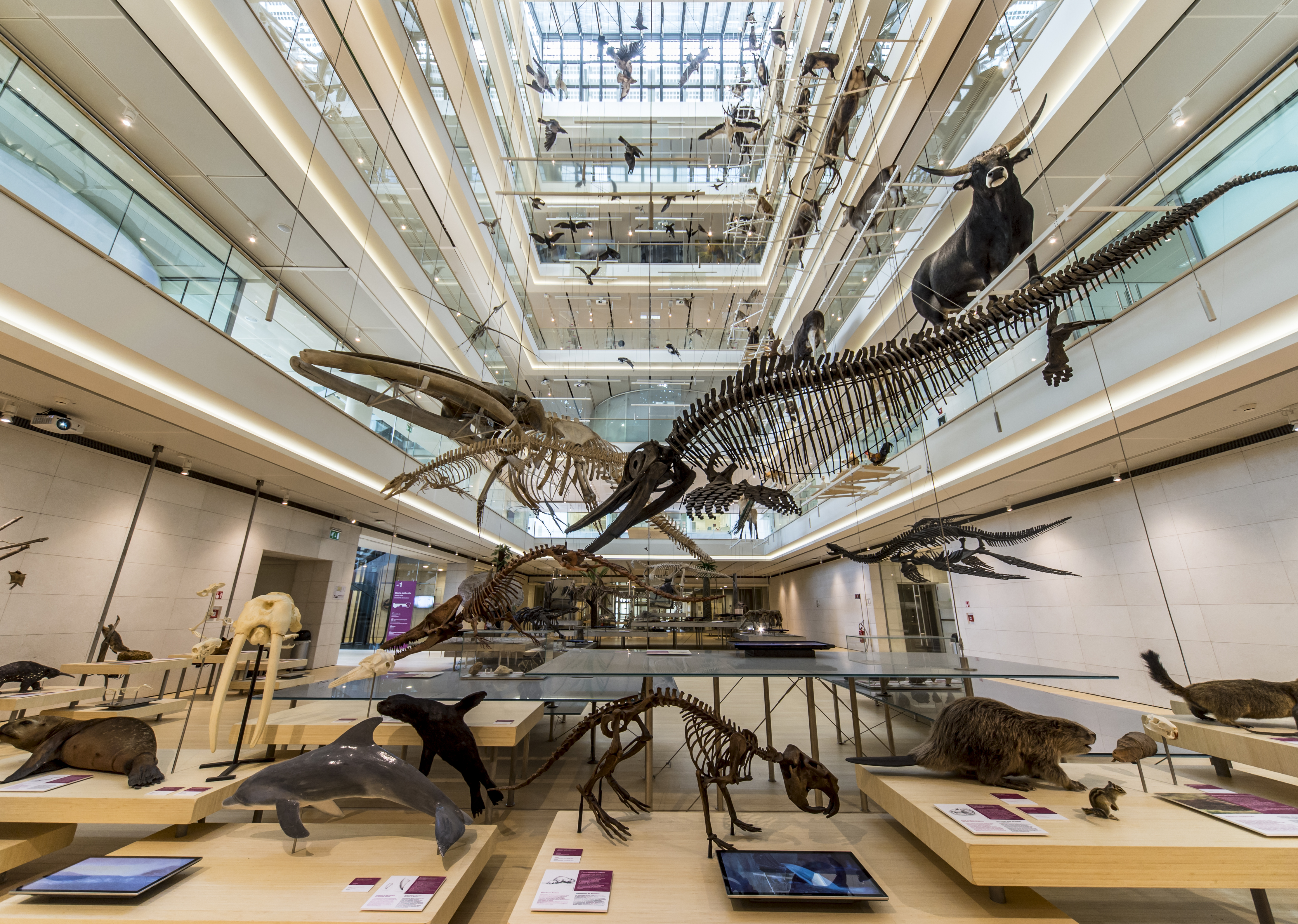|
Palaeocharinus
''Palaeocharinus'' is a genus of extinct trigonotarbid arachnids known from the Devonian of western Europe. The genus was first found and described in the Rhynie chert in the 1920s by Arthur Stanley Hirst and S. Maulik. The family to which the genus belongs may be paraphyletic. Species * ''Palaeocharinus calmani'' (Hirst, 1923) – Early Devonian The Early Devonian is the first of three Epoch (geology), epochs comprising the Devonian period, corresponding to the Lower Devonian Series (stratigraphy), series. It lasted from and began with the Lochkovian Stage , which was followed by the P ..., Scotland * ''Palaeocharinus hornei'' (Hirst, 1923) – Early Devonian, Scotland * ''Palaeocharinus kidstoni'' (Hirst, 1923) – Early Devonian, Scotland * ''Palaeocharinus rhyniensis'' (Hirst, 1923) – Early Devonian, Scotland * ''Palaeocharinus scourfieldi'' (Hirst, 1923) – Early Devonian, Scotland * ''Palaeocharinus tuberculatus'' (Fayers, Dunlop & Trewin, 2005) – Early Devonian ... [...More Info...] [...Related Items...] OR: [Wikipedia] [Google] [Baidu] |
Trigonotarbida
The order Trigonotarbida is a group of extinct arachnids whose fossil record extends from the late Silurian to the early Permian ( Pridoli to Sakmarian).Dunlop, J. A., Penney, D. & Jekel, D. 2020A summary list of fossil spiders and their relatives In World Spider Catalog. Natural History Museum Bern, online at http://wsc.nmbe.ch, version 20.5 These animals are known from several localities in Europe and North America, as well as a single record from Argentina. Trigonotarbids can be envisaged as spider-like arachnids, but without silk-producing spinnerets. They ranged in size from a few millimetres to a few centimetres in body length and had segmented abdomens (opisthosoma), with the dorsal exoskeleton (tergites) across the backs of the animals' abdomens, which were characteristically divided into three or five separate plates. Probably living as predators on other arthropods, some later trigonotarbid species were quite heavily armoured and protected themselves with spines and tube ... [...More Info...] [...Related Items...] OR: [Wikipedia] [Google] [Baidu] |
Trigonotarbids
The Order (biology), order Trigonotarbida is a group of extinct arachnids whose fossil record extends from the late Silurian to the early Permian (Pridoli epoch, Pridoli to Sakmarian).Dunlop, J. A., Penney, D. & Jekel, D. 2020A summary list of fossil spiders and their relatives In World Spider Catalog. Natural History Museum Bern, online at http://wsc.nmbe.ch, version 20.5 These animals are known from several localities in Europe and North America, as well as a single record from Argentina. Trigonotarbids can be envisaged as spider-like arachnids, but without silk-producing spinnerets. They ranged in size from a few millimetres to a few centimetres in body length and had segmented abdomens (opisthosoma), with the dorsal exoskeleton (Tergum, tergites) across the backs of the animals' abdomens, which were characteristically divided into three or five separate plates. Probably living as predators on other arthropods, some later trigonotarbid species were quite heavily armoured and prot ... [...More Info...] [...Related Items...] OR: [Wikipedia] [Google] [Baidu] |
Rhynie Chert
The Rhynie chert is a Lower Devonian sedimentary deposit exhibiting extraordinary fossil detail or completeness (a Lagerstätte). It is exposed near the village of Rhynie, Aberdeenshire, Scotland; a second unit, the Windyfield chert, is located some 700 m away. The Rhynie chert contains exceptionally preserved plant, fungus, lichen and animal material preserved in place by an overlying volcanic deposit. The bulk of the Devonian fossil bed consists of primitive plants (which had water-conducting cells and sporangia, but no true leaves), along with arthropods, lichens, algae and fungi. This fossil bed is remarkable for two reasons. First, the age of the site ( Pragian, Early Devonian, formed about ) places it at an early stage in the colonisation of land. Second, these cherts are famous for their exceptional state of ultrastructural preservation, with individual cell walls easily visible in polished specimens. Stomata have been counted and lignin remnants detected in the ... [...More Info...] [...Related Items...] OR: [Wikipedia] [Google] [Baidu] |
MUSE - Science Museum
The Museo delle Scienze (MUSE) is a science museum in Trento, Italy. The museum was designed by architect Renzo Piano Renzo Piano (; born 14 September 1937) is an Italian architect. His notable buildings include the Centre Georges Pompidou in Paris (with Richard Rogers, 1977), The Shard in London (2012), the Whitney Museum of American Art in New York City ( ... and opened in 2013. References Science museums in Italy {{Italy-museum-stub ... [...More Info...] [...Related Items...] OR: [Wikipedia] [Google] [Baidu] |
Fossilworks
Fossilworks is a portal which provides query, download, and analysis tools to facilitate access to the Paleobiology Database The Paleobiology Database is an online resource for information on the distribution and classification of fossil animals, plants, and microorganisms. History The Paleobiology Database (PBDB) originated in the NCEAS-funded Phanerozoic Marine Pale ..., a large relational database assembled by hundreds of paleontologists from around the world. History Fossilworks was created in 1998 by John Alroy and is housed at Macquarie University. It includes many analysis and data visualization tools formerly included in the Paleobiology Database.{{cite web, title=Frequently asked questions, url=http://www.fossilworks.org/cgi-bin/bridge.pl?page=FAQ, publisher=Fossilworks, access-date=17 December 2021 References {{Reflist External links {{Wikidata property, P842 * [Baidu] |
Early Devonian Genus Extinctions
{{disambiguation, geo ...
Early may refer to: History * The beginning or oldest part of a defined historical period, as opposed to middle or late periods, e.g.: ** Early Christianity ** Early modern Europe Places in the United States * Early, Iowa * Early, Texas * Early Branch, a stream in Missouri * Early County, Georgia Other uses * ''Early'' (Scritti Politti album), 2005 * ''Early'' (A Certain Ratio album), 2002 * Early (name) * Early effect, an effect in transistor physics * Early Records, a record label * the early part of the morning See also * Earley (other) Earley is a town in England. Earley may also refer to: * Earley (surname), a list of people with the surname Earley * Earley (given name), a variant of the given name Earlene * Earley Lake, a lake in Minnesota *Earley parser, an algorithm *Earley ... [...More Info...] [...Related Items...] OR: [Wikipedia] [Google] [Baidu] |
Early Devonian First Appearances
{{disambiguation, geo ...
Early may refer to: History * The beginning or oldest part of a defined historical period, as opposed to middle or late periods, e.g.: ** Early Christianity ** Early modern Europe Places in the United States * Early, Iowa * Early, Texas * Early Branch, a stream in Missouri * Early County, Georgia Other uses * ''Early'' (Scritti Politti album), 2005 * ''Early'' (A Certain Ratio album), 2002 * Early (name) * Early effect, an effect in transistor physics * Early Records, a record label * the early part of the morning See also * Earley (other) Earley is a town in England. Earley may also refer to: * Earley (surname), a list of people with the surname Earley * Earley (given name), a variant of the given name Earlene * Earley Lake, a lake in Minnesota *Earley parser, an algorithm *Earley ... [...More Info...] [...Related Items...] OR: [Wikipedia] [Google] [Baidu] |
Devonian Scotland
The Devonian ( ) is a geologic period and system of the Paleozoic era, spanning 60.3 million years from the end of the Silurian, million years ago (Mya), to the beginning of the Carboniferous, Mya. It is named after Devon, England, where rocks from this period were first studied. The first significant adaptive radiation of life on dry land occurred during the Devonian. Free-sporing vascular plants began to spread across dry land, forming extensive forests which covered the continents. By the middle of the Devonian, several groups of plants had evolved leaves and true roots, and by the end of the period the first seed-bearing plants appeared. The arthropod groups of myriapods, arachnids and hexapods also became well-established early in this period, after starting their expansion to land at least from the Ordovician period. Fish reached substantial diversity during this time, leading the Devonian to often be dubbed the Age of Fishes. The placoderms began dominating ... [...More Info...] [...Related Items...] OR: [Wikipedia] [Google] [Baidu] |
Devonian Arthropods Of Europe
The Devonian ( ) is a geologic period and system of the Paleozoic era, spanning 60.3 million years from the end of the Silurian, million years ago (Mya), to the beginning of the Carboniferous, Mya. It is named after Devon, England, where rocks from this period were first studied. The first significant adaptive radiation of life on dry land occurred during the Devonian. Free-sporing vascular plants began to spread across dry land, forming extensive forests which covered the continents. By the middle of the Devonian, several groups of plants had evolved leaves and true roots, and by the end of the period the first seed-bearing plants appeared. The arthropod groups of myriapods, arachnids and hexapods also became well-established early in this period, after starting their expansion to land at least from the Ordovician period. Fish reached substantial diversity during this time, leading the Devonian to often be dubbed the Age of Fishes. The placoderms began dominating al ... [...More Info...] [...Related Items...] OR: [Wikipedia] [Google] [Baidu] |
Devonian Arachnids
The Devonian ( ) is a geologic period and system of the Paleozoic era, spanning 60.3 million years from the end of the Silurian, million years ago (Mya), to the beginning of the Carboniferous, Mya. It is named after Devon, England, where rocks from this period were first studied. The first significant adaptive radiation of life on dry land occurred during the Devonian. Free-sporing vascular plants began to spread across dry land, forming extensive forests which covered the continents. By the middle of the Devonian, several groups of plants had evolved leaves and true roots, and by the end of the period the first seed-bearing plants appeared. The arthropod groups of myriapods, arachnids and hexapods also became well-established early in this period, after starting their expansion to land at least from the Ordovician period. Fish reached substantial diversity during this time, leading the Devonian to often be dubbed the Age of Fishes. The placoderms began dominating ... [...More Info...] [...Related Items...] OR: [Wikipedia] [Google] [Baidu] |
Early Devonian
The Early Devonian is the first of three Epoch (geology), epochs comprising the Devonian period, corresponding to the Lower Devonian Series (stratigraphy), series. It lasted from and began with the Lochkovian Stage , which was followed by the Pragian from and then by the Emsian, which lasted until the Middle Devonian began, . During this time, the first Ammonoidea, ammonoids appeared, descending from Bactritida, bactritoid Nautiloidea, nautiloids. Ammonoids during this time period were simple and differed little from their nautiloid counterparts. These ammonoids belong to the order Agoniatitida, which in later epochs evolved to new ammonoid orders, for example Goniatite, Goniatitida and Clymeniida. This class of cephalopod molluscs would dominate the marine fauna until the beginning of the Mesozoic Era. References {{Geological history Early Devonian, Geological epochs Devonian geochronology, *01 ... [...More Info...] [...Related Items...] OR: [Wikipedia] [Google] [Baidu] |
Geological Society Of America
The Geological Society of America (GSA) is a nonprofit organization dedicated to the advancement of the geosciences. History The society was founded in Ithaca, New York, in 1888 by Alexander Winchell, John J. Stevenson, Charles H. Hitchcock, John R. Procter and Edward Orton and has been headquartered at 3300 Penrose Place, Boulder, Colorado, US, since 1967. GSA began with 100 members under its first president, James Hall. In 1889 Mary Emilie Holmes became its first female member. It grew slowly but steadily to 600 members until 1931, when a nearly $4 million endowment from 1930 president R. A. F. Penrose Jr. jumpstarted GSA's growth. As of December 2017, GSA had more than 25,000 members in over 100 countries. The society has six regional sections in North America, three interdisciplinary interest groups, and eighteen specialty divisions. Activities The stated mission of GSA is "to advance geoscience research and discovery, service to society, stewardship of Earth, an ... [...More Info...] [...Related Items...] OR: [Wikipedia] [Google] [Baidu] |




